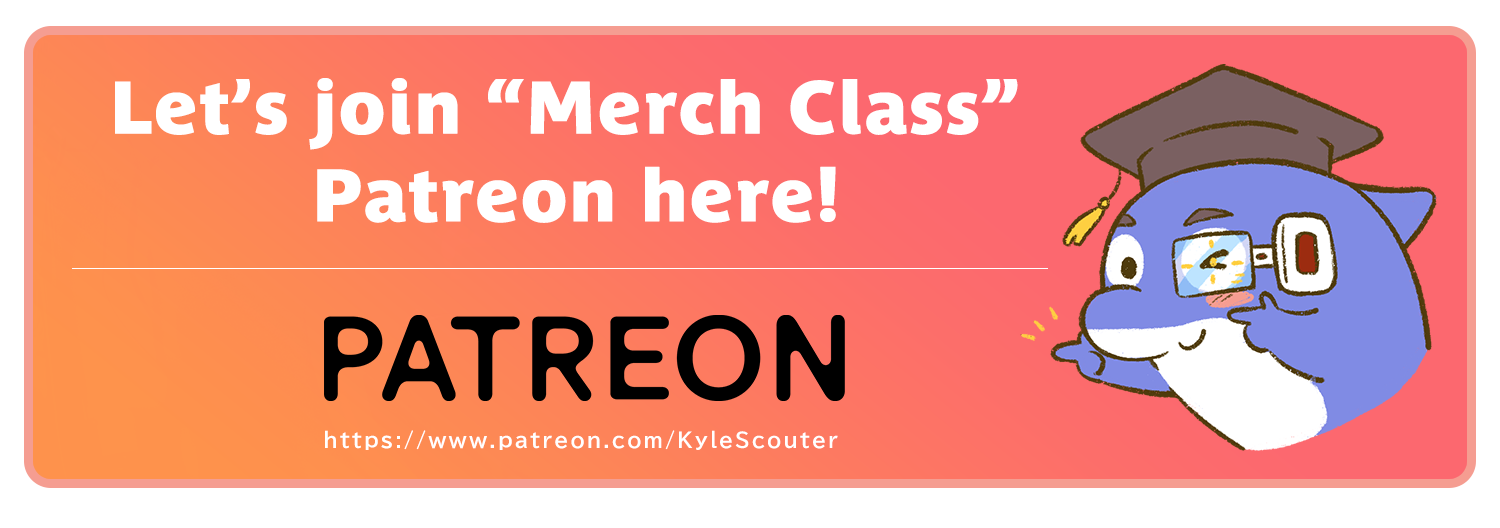Jujutsu Kaisen【ch.4】Full-page explanation

Hi everyone, こんにちは!
This is Kyle Scouter.
Welcome to a thrilling journey into the dark and mystic world of Jujutsu Kaisen!
I will break down each panel, offering insightful commentary and analysis to enhance your understanding of the story, characters, and the fascinating world created by Gege Akutami Sensei.
I’ve created visual aids to help illustrate each point on every page, making it easier to follow the details.
I will talk about Jujutsu Kaisen Ch.4, “Girl of Steel” and explain in detail in the text what the images alone cannot explain enough.
Let’s dive into the Jujutsu Kaisen world now!
Page 1
① 鉄骨娘(Tekkotsu Musume)
The title of this chapter is “鉄骨娘(Tekkotsu Musume)” in Japanese.
In English, “Girl of Steel”.
“Tekkotsu Musume” is the character representing the energy drink “Tekkotsu Inryou” in Japan. She serves as the mascot for this energy drink, known for its high caffeine and amino acid content, marketed as a stamina drink.
Tekkotsu Musume is depicted as a strong, energetic character, often shown in powerful poses that exude vitality. This character is used in packaging and promotional materials, symbolizing the product’s attributes and energy-filled image.
This strong, energetic character is the same as Nobara.
Maybe that’s why Gege Sensei made the title of Ch.4 “鉄骨娘(Tekkotsu Musume)”.
② Megumi’s info
There’s Megumi’s info on vol.1 extra.
・He’s 175cm tall, which is a little taller than Itadori, who is still growing.
・He likes reading nonfiction
・He knows Gojo from before he entered Jujutsu High
・He likes food that pairs well with ginger and dislike red bell pepper
・He wears clothes that would be comfortable at home
And Gege Sensei says “Megumi’s hairstyle is erratic”.
It is good that you can know the character’s personality more deeply on an extra page.
Page 2&3
① Yuji’s uniform
Gojo designed Yuji’s uniform but did you know where the design came from?
Gege Sensei talked about this design in Mando Kobayashi Interview.
“Mando Kobayashi” is a specialized program for manga fans where Kendo Kobayashi, Japanese comedian known for being a manga enthusiast, visits his favorite manga artists.
According to the interview, Gege Sensei seems to be particularly focused on the neck of Yuji’s uniform. He said he was influenced by Naruto and decided to go with it because it looks cool.
② Takeshita street in Harajuku
Have you ever heard of Takeshita Street in Harajuku?
Takeshita Street in Harajuku, Tokyo, is a bustling pedestrian street known for its vibrant and youthful atmosphere. It’s a popular and iconic destination known for its trendy fashion boutiques, quirky shops, diverse eateries, and unique street fashion.
This bustling street is a hub for Japan’s youth culture and fashion trends, drawing in locals and tourists alike. Takeshita Street is famous for its eclectic mix of shops offering a wide array of fashion items, from trendy clothing, accessories, and cosmetics to novelty items, souvenirs, and snacks.
As a hub for Japan’s youth culture and fashion trends, it is also a popular place for scouting models and actresses. In Japan, entertainment agencies often scout on the streets. In fact, it is not only entertainment agencies that scout. If you go to places like Shinjuku, scouting for hosts and cabarets is also common.
③ Nobara’s personality
Nobara asks the scout, “私は?(Watashiha?)”, which means “What about me?” in English.
She makes her first appearance in Ch.4, but this one word says a lot about her character.
She is confident, strong-willed, and fearless. We can see that from this panel, right?
Gege Sensei is really good at showing character without explaining too much in words.
Page 4&5
① ワタシハ?
Nobara asked “私は?(Watashiha?)”, then the scout thought “ワタシハ?(Watashiha)”. His thoughts are written in katakana.
In manga, when a character encounters an unfamiliar or incomprehensible word, the authors often represent it in katakana. This technique signifies that the character doesn’t understand the meaning or context of that word.
For example, When Yuji encounters the word “宿儺” (Shukuna) and doesn’t recognize it in Ch.1, Gege Sensei wrote it in katakana to indicate the Yuji’s lack of comprehension. Yuji tried to pronounce it differently, like “スクナ” (Sukuna), reflecting his attempt to understand or pronounce the unfamiliar term.
This technique visually portrays the character’s inability to grasp or comprehend a particular word or concept, allowing readers to understand that the term is unfamiliar or beyond the character’s understanding within the story context.
③ Peco & Ryuchell
They are a popular couple in the fashion and entertainment scene in Harajuku, Tokyo. They gained fame through their distinctive and eclectic style, often featured in magazines, social media, and various fashion events.
And their fashion style is typical “Harajuku fashion”.
It’s renowned for its vibrant, creative, and often unconventional styles that blend various influences, allowing individuals to express their unique identities through clothing.
This fashion scene embraces a mix of contrasting elements, combining elements from traditional Japanese attire, pop culture, punk, gothic, lolita fashion, cosplay, and high-end designer brands. It’s characterized by its avant-garde, bold, and sometimes whimsical combinations, encouraging self-expression and creativity.
One of the unique aspects of Harajuku fashion is its inclusivity, allowing individuals to mix and match styles freely, creating their own fashion statements. The district’s Takeshita Street and nearby areas are bustling hubs where fashion enthusiasts showcase their styles, attracting both locals and international visitors seeking a glimpse into this dynamic and ever-evolving fashion culture.
And Gege Sensei drew them to impress us that they are in Harajuku.
④ 紅一点(Kouitten)
紅一点(Kouitten) means a situation where there’s only one woman among a group of men, or in a predominantly male environment. It translates to “the only red” or “sole red spot” in English, with the color red symbolizing uniqueness or distinctiveness.
The origin of this expression is an old Chinese poem.
In this poem, there is a phrase meaning “a single pomegranate blooming in a field of green grass all around,” which is said to be the origin of the phrase “紅一点(Kouitten)”. In other words, the “red” in “紅一点(Kouitten)” refers to the red flower of the pomegranate.
And Noraba’s name, 野薔薇(Nobara) means wild rose in Japanese. So she is literally the “紅一点(Kouitten)”, only one flower among a group of men.
⑤ Yuji is from Sendai
Yuji’s hometown is Sendai.
Why?
This is also Gege Sensei’s hometown. In Jujutsu Kaisen, Sendai and the Tohoku region are often depicted. I think Gege Sensei knows about Tohoku well, so he wants to draw it in Jujutsu Kaisen.
⑥ Nobara’s Bad Mouth
Nobara’s first impression of Yuji and Megumi is terrible.
Yuii → イモ臭い(Imokusai)
Megumi → Lighting a gull drenched in oil on fire.
イモ臭い(Imokusai) means, in literal translation in English, potato smelly.
This is a derogatory term for a person who looks provincial or unrefined, or who has a wild or unrefined taste in clothing or lacks good taste. In Japan, potato is associated with the countryside.
“Lighting a gull drenched in oil on fire”
This is Nobara’s first impression of Megumi, who introduced himself only by his full name.
It is interesting because we can somehow imagine Megumi doing that. All characters in Jujutsu Kaisen have a sense of word choice, but Nobara’s lines, which are delivered with a unique sensibility, are particularly outstanding and addictive. It would be great if there were a summary of first impressions of all the characters from Nobara’s point of view.
Page 6&7 
① Nobara’s environment
Nobara is from a very rural area.
This detail will be drawn later in Nobara’s flashback, but her hometown was a typical small Japanese village. When the population of rural Japan is small, people inevitably get to know each other’s faces, family structures, occupations, etc., and become more involved with each other. At times, it crosses the line sometimes. Nobara didn’t like that Japanese rural society, so she came to Tokyo.
② おのぼりさん(Onoborisan)
“おのぼりさん(Onoborisan)” refers to individuals from rural areas who have moved or come to Tokyo or other major cities. It literally translates to “honorable person who has come up”. It is often used to denote newcomers from rural backgrounds who might be less accustomed to the lifestyle or customs of the city, showcasing a contrast in experiences and sometimes used playfully or colloquially.
③ Yuji and Nobara says Yokohama Chinatown and TDL
Both places are not in Tokyo, Yokohama is in Kanagawa Prefecture and TDL (Tokyo Disney Land) is in Chiba Prefecture. This is often misunderstood by people from the countryside who do not live in Tokyo, who think these places are in Tokyo. Yuji and Nobara just moved to Tokyo and don’t know Tokyo well, so Gege Sensei drew this to show that.
④ Why are Yuji and Nobara so excited for Roppongi?
Roppongi represents the vibrant urban lifestyle of Tokyo—a bustling district with flashy lights, high-rise buildings, extravagant clubs, and a diverse mix of people from various backgrounds. Rural visitors might perceive Roppongi as an epitome of the modern, fast-paced city life with its vibrant nightlife, luxury establishments, and a more cosmopolitan atmosphere. There is no such town in Tohoku and Roppongi is well known as a place that rural people long to visit, so they are so excited to go there.
Page 8&9
① Graveyard = Scary
The perception of Japanese graveyards as eerie or spooky might stem from several cultural factors. In Japan, graveyards are often associated with spirituality, reverence for ancestors, and traditional beliefs like Shinto and Buddhism.
Furthermore, cultural references in movies, literature, or folklore may have also contributed to the portrayal of graveyards as spooky or haunting in some contexts. So Japanese have this stereotype.
② Nobara’s reaction
When Nobara heard that Yuji had eaten Sukuna’s finger, she said “きっしょ(Kissho)” in Japanese. “Kissho” is a Japanese slang term used to express disgust or discomfort towards something unpleasant or distasteful. It’s used to describe things that are crude, unclean, or generally unpleasant, conveying a sense of aversion or disgust. This word is also used by Fake Geto when Gojo finds out he is not Geto in Shibuya Incident.
③ 屠坐魔(Tozama)
The English translation of ‘Tozama’ is ‘Slaughter Demon’. It sounds cool, but the original Japanese version is even more impressive.
Kanji Interpretation:
屠/To → Slaughter, destroy
坐/Za → to sit, to kneel
魔/Ma → Demon, monster
This implies a weapon that annihilates demons. A simple yet fascinating and cool name.
Interestingly, ‘Tozama’ is not a common word in Japan. It’s usually read with ruby, as the kanji convey a sense of coolness and foreboding.
Thank you for reading.
My Patreon contains a description of the remaining pages.
Jujutsu Kaisen【ch.4】Full-page explanation
Benefits of Kyle’s Scouter’s Patreon
・10 chapters per month of Manga full-page explanation
・Q&A Sessions
・Merchandise Insights
・Travel and Food Tips in Japan
All of these are available for 7$ per month.
More info in this link↓
0 comments
No comments














0 comments